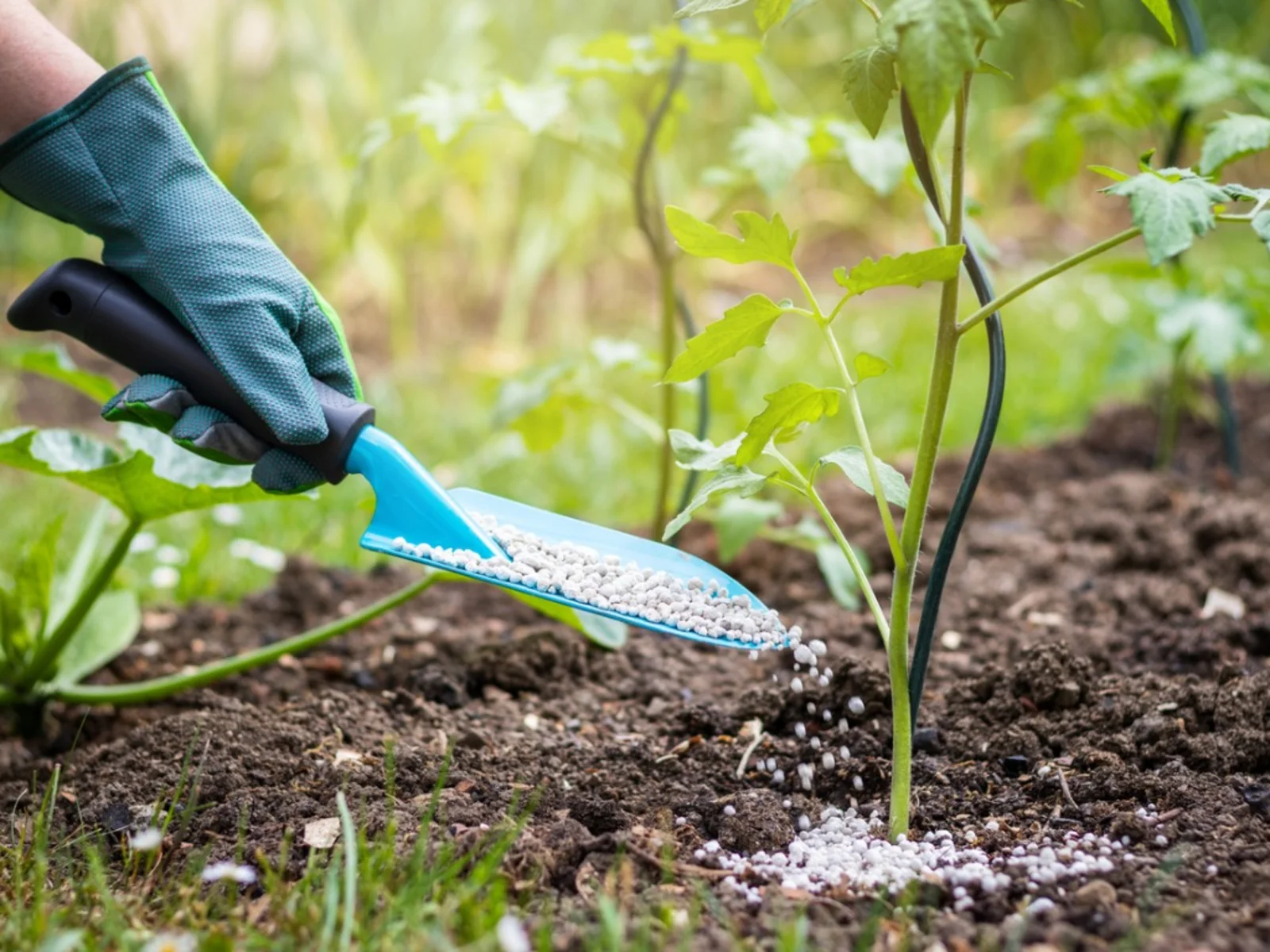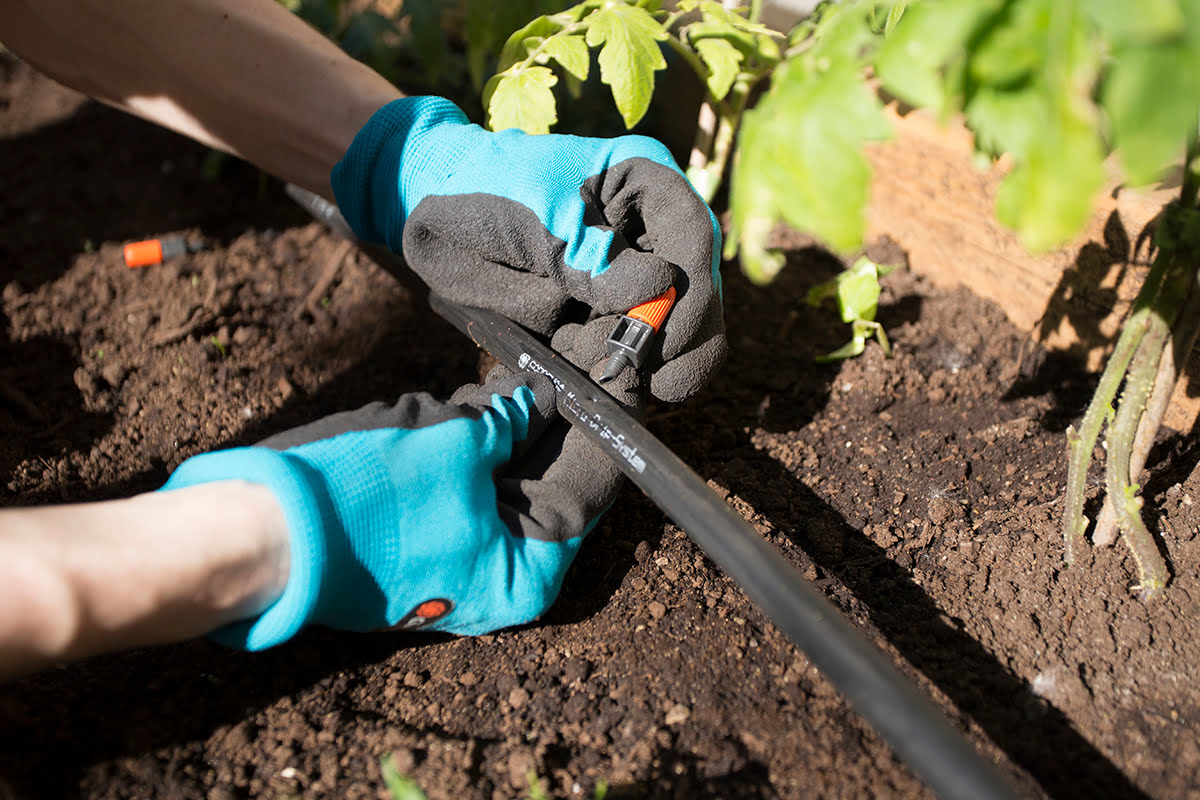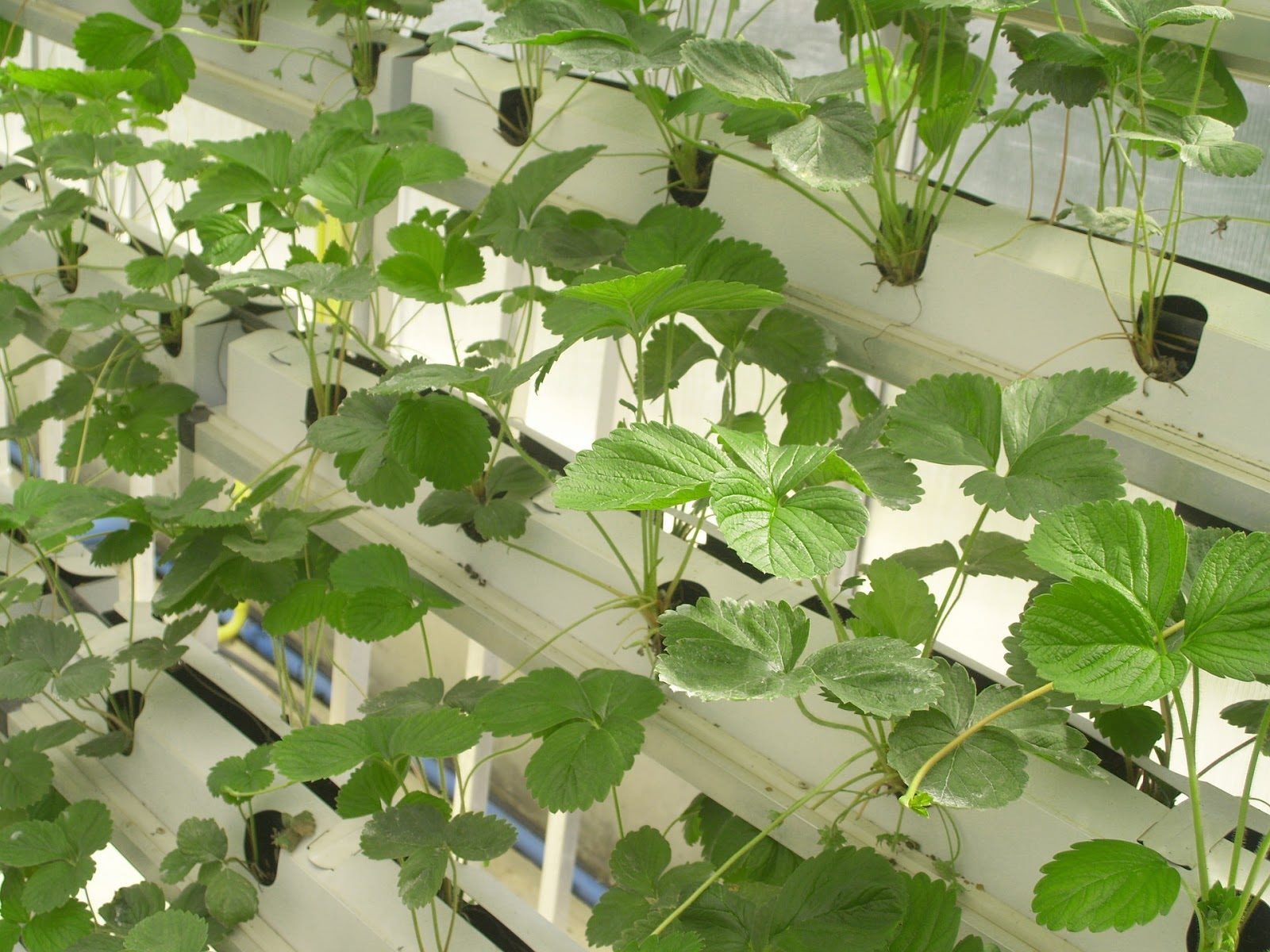Home>Gardening Basics>Understanding Soil>How To Add Nutrients To Soil


Understanding Soil
How To Add Nutrients To Soil
Published: February 8, 2024
Learn how to add essential nutrients to your soil and improve its quality with our comprehensive guide on understanding soil.
(Many of the links in this article redirect to a specific reviewed product. Your purchase of these products through affiliate links helps to generate commission for Chicagolandgardening.com, at no extra cost. Learn more)
Table of Contents
Introduction
Welcome to the world of soil, where the foundation for healthy plant growth begins. Soil is more than just dirt; it’s a complex ecosystem teeming with life and nutrients that are essential for plants to thrive. Understanding soil and how to provide it with the right nutrients is crucial for any gardener, landscaper, or farmer.
In this article, we will explore the important role of adding nutrients to soil and the various methods to achieve this. Whether you are growing vegetables in your backyard garden or managing vast agricultural fields, knowing how to optimize the nutrient content in your soil is key to success.
From organic methods to inorganic options, we will delve into the different techniques available for enriching soil with essential nutrients. But before we dive into the methods, let’s understand why adding nutrients to soil is so important.
Soil is the medium that provides plants with the necessary support, water, and nutrients they need to grow and thrive. However, over time, these nutrients can become depleted, especially in heavily cultivated areas. When essential nutrients are lacking in the soil, plants may exhibit stunted growth, yellowing leaves, and poor fruit production.
Adding nutrients to soil not only replenishes the elements necessary for plant growth but also improves the overall fertility and health of the soil. This, in turn, leads to healthier plants with better disease resistance and higher yields.
Whether you are starting from scratch with new soil or working with existing soil, understanding the soil’s nutrient requirements is crucial. By assessing the nutrient levels and using the appropriate methods to add nutrients, you can optimize your soil’s potential and foster a thriving environment for your plants.
In the following sections, we will explore the different types of nutrients needed for healthy soil and the various methods, both organic and inorganic, to add these nutrients. We will also discuss how to test soil for nutrient levels and the factors to consider when adding nutrients to soil. So let’s dive in and unlock the secrets to nourishing your soil!
Why is Adding Nutrients to Soil Important?
The health and fertility of soil play a vital role in the success of any gardening or farming endeavor. Adding nutrients to soil is essential for several reasons:
- Promotes Healthy Plant Growth: Plants require a wide range of nutrients to develop strong roots, stems, and leaves. Adding nutrients to soil ensures that plants have access to these essential elements, promoting healthy growth and increasing their ability to withstand environmental stressors.
- Enhances Nutritional Value: Nutrient-rich soil translates to nutrient-rich crops. By adding the right balance of nutrients to the soil, you can improve the nutritional content of the plants you are cultivating. This is particularly important for edible crops, as it directly impacts the health and well-being of those consuming them.
- Increases Crop Yields: Adequate nutrient availability in the soil directly correlates to higher crop yields. When plants have access to the necessary nutrients, they can reach their full potential, resulting in increased productivity and higher-quality harvests.
- Improves Soil Structure: Nutrient-rich soil has better structure and texture, allowing for improved water drainage and root penetration. This, in turn, enhances the soil’s ability to retain moisture and prevents erosion, creating a more stable and conducive environment for plant growth.
- Enhances Soil Microbial Activity: Soil is home to a diverse range of beneficial microorganisms that play a vital role in nutrient cycling and plant health. Adding nutrients to the soil supports these microorganisms, fostering their growth and activity. This symbiotic relationship between plants and microbes further enhances soil fertility and nutrient availability.
Overall, adding nutrients to soil is crucial for creating an optimal growing environment where plants can thrive and reach their full potential. It not only benefits the plants themselves but also has a positive impact on the overall health and sustainability of the ecosystem.
Types of Nutrients Needed for Healthy Soil
To maintain the fertility and health of soil, it is important to understand the types of nutrients that are essential for plant growth. These nutrients can be broadly categorized into three groups:
- Primary Nutrients: Primary nutrients are the macronutrients required in large quantities by plants. They include:
- Nitrogen (N): Nitrogen is responsible for stimulating leafy growth and overall plant development.
- Phosphorus (P): Phosphorus supports root development, flowering, and fruiting in plants.
- Potassium (K): Potassium aids in the overall health and vigor of plants, improving their ability to withstand stress.
- Secondary Nutrients: Secondary nutrients are required in moderate quantities by plants. They include:
- Calcium (Ca): Calcium aids in cell wall formation and proper plant growth.
- Magnesium (Mg): Magnesium plays a key role in chlorophyll production and photosynthesis.
- Sulfur (S): Sulfur is essential for protein synthesis and enzyme activity in plants.
- Micronutrients: Micronutrients are required in trace amounts by plants, but they are equally important. They include:
- Iron (Fe), Zinc (Zn), Manganese (Mn), Copper (Cu), Molybdenum (Mo), and Boron (B): These micronutrients are involved in various plant processes, including enzyme activity, photosynthesis, and nutrient uptake.
To ensure healthy soil, it is essential to provide a balanced supply of these primary, secondary, and micronutrients. Different plants may have varying nutrient requirements, so it is important to understand the specific needs of the plants you are growing.
It is worth noting that soil also provides other non-nutritional elements that are essential for plant growth, such as oxygen, water, and a suitable pH level. These factors, along with proper nutrient levels, contribute to the overall health and productivity of the soil.
Now that we understand the types of nutrients needed for healthy soil, let’s explore the various methods available to add these nutrients and enhance soil fertility.
Organic Methods to Add Nutrients to Soil
Organic methods of adding nutrients to soil involve the use of natural materials that provide a slow-release and sustainable source of nutrients. These methods not only enrich the soil but also improve its overall health and fertility. Here are several effective organic methods to consider:
- Composting: Composting is the process of decomposing organic materials such as kitchen scraps, yard waste, and plant residues. This produces nutrient-rich compost that can be incorporated into the soil. Compost adds organic matter, improves soil structure, and slowly releases essential nutrients.
- Cover Cropping: Planting cover crops, such as legumes or grasses, during the off-season helps add organic matter, fix nitrogen from the air, and prevent soil erosion. These cover crops can be tilled into the soil, contributing nutrients and improving soil health when they decompose.
- Manure Application: Well-aged animal manure, such as cow or chicken manure, is an excellent source of organic nutrients. It adds valuable nitrogen, phosphorus, and potassium to the soil. Ensure the manure is well-composted or aged before application to prevent burning plant roots and reduce the risk of contaminants.
- Green Manure: Green manure involves growing specific crops, like clover or rye, and then incorporating them into the soil while still green. This adds organic matter and nutrients, improves soil structure, and helps suppress weeds.
- Biochar: Biochar is produced by heating organic material in a low-oxygen environment. It is a highly porous charcoal-like substance that improves soil fertility, water retention, and nutrient availability. Biochar can be mixed into the soil or used as a top dressing.
- Organic Fertilizers: Organic fertilizers, derived from plant or animal sources, provide a balanced combination of essential nutrients. Examples include fish emulsion, seaweed extract, bone meal, and blood meal. These fertilizers release nutrients slowly, nourishing plants over time.
When using organic methods, it is important to consider the specific nutrient requirements of your plants and adjust the application rates accordingly. Regularly incorporating organic matter into the soil through these methods will promote long-term soil health and sustainability.
Now that we’ve explored organic methods of adding nutrients to soil, let’s take a look at inorganic methods and how they can be used effectively.
Inorganic Methods to Add Nutrients to Soil
In addition to organic methods, there are inorganic methods available to quickly and efficiently add nutrients to soil. These methods involve the use of synthetic fertilizers that provide a concentrated source of nutrients. While they may not contribute to long-term soil health as organic methods do, they can be useful in certain situations. Here are some common inorganic methods to consider:
- Chemical Fertilizers: Chemical fertilizers are formulated to provide specific ratios of nitrogen (N), phosphorus (P), and potassium (K), as well as other essential nutrients. They come in various forms, such as granules, powders, or liquid solutions, and are typically labeled with a three-number ratio (N-P-K). These fertilizers deliver nutrients quickly to plants and are readily available at garden centers.
- Foliar Feeding: Foliar feeding involves spraying a diluted fertilizer solution directly onto plant leaves. This method allows plants to quickly absorb nutrients through their foliage. Foliar feeding is particularly useful for correcting nutrient deficiencies or providing a quick boost of nutrients during periods of high demand, such as flowering or fruit development.
- Hydroponic Fertilizers: Hydroponic systems rely on a nutrient solution to supply plants with essential elements. These fertilizers are specifically designed for soilless cultivation and provide a precise balance of nutrients in a readily available form. They are commonly used in indoor gardening or hydroponic setups, where plants are grown in water-based solutions.
- Soluble Fertilizers: Soluble fertilizers are quick-release fertilizers that dissolve in water, making them easy to apply through irrigation systems. These fertilizers provide an immediate nutrient boost, but their effects may not last as long as slow-release organic fertilizers. They are often used when a rapid response is needed, such as in agricultural production or container gardening.
- Controlled-Release Fertilizers: Controlled-release fertilizers are designed to slowly release nutrients over an extended period. These fertilizers are typically coated with a thin polymer layer that controls the rate of nutrient release in response to temperature, moisture, or microbial activity. They are often used in situations where a consistent supply of nutrients is required over time, such as in landscaping or large-scale agriculture.
When using inorganic methods, it is crucial to follow the recommended application rates and precautions provided by the manufacturer. Overapplication of synthetic fertilizers can lead to nutrient imbalances, environmental pollution, and long-term harm to soil health.
Understanding the specific nutrient needs of your plants, conducting soil tests, and considering the environmental impact will help you choose the most appropriate method of adding nutrients to your soil.
Now that we have explored both organic and inorganic methods of adding nutrients to soil, let’s move on to the importance of testing soil for nutrient levels.
Testing Soil for Nutrient Levels
Testing the nutrient levels in your soil is a crucial step in determining the specific nutrient requirements of your plants. Soil testing provides valuable insights into the existing nutrient content, pH level, and overall health of the soil. Here’s why it is essential to test your soil:
- Identify Nutrient Deficiencies: Soil testing helps pinpoint any nutrient deficiencies that may be limiting plant growth and health. By knowing which nutrients are lacking, you can make targeted adjustments to your fertilization practices, ensuring that plants have access to the necessary elements for optimal growth.
- Avoid Nutrient Imbalances: Soil testing also helps to prevent excessive nutrient levels, which can lead to nutrient imbalances and adverse effects on plant health. By understanding the existing nutrient levels, you can make informed decisions about the types and amounts of fertilizers to apply.
- Save Money and Resources: Testing your soil allows you to optimize your fertilizer application. Instead of blindly applying fertilizers, you can determine the exact nutrients your soil needs, saving money by avoiding unnecessary purchases and preventing overapplication of fertilizers that can leach into water sources.
- Monitor Changes in Soil Health: Regular soil testing enables you to track the changes in soil health over time. By monitoring nutrient levels, organic matter content, and pH, you can make adjustments to your soil management practices and ensure the long-term sustainability of your soil.
So how do you test your soil for nutrient levels? There are several methods available:
- Home Test Kits: Home test kits provide a convenient way to analyze soil nutrient levels at home. These kits typically include test strips or reagents that change color in the presence of specific nutrients. While they can provide a general idea of nutrient levels, the results may not be as accurate as professionally conducted tests.
- Commercial Soil Testing Labs: Professional soil testing labs offer comprehensive soil analysis services. They provide detailed reports on nutrient levels, pH, organic matter content, and other essential soil properties. This option is recommended for more accurate and detailed results, especially if you are managing larger areas or have specific crop requirements.
- Cooperative Extension Offices: Many cooperative extension offices or local agricultural agencies offer soil testing services or can guide you to reputable soil testing labs. They often provide specific recommendations based on your soil test results, helping you make informed decisions about nutrient management.
By regularly testing your soil, you can ensure that you are providing the right balance of nutrients for your plants’ needs. This targeted approach optimizes plant growth, reduces environmental impact, and promotes long-term soil health.
Now that we have explored soil testing, let’s delve into the factors you need to consider when adding nutrients to soil.
Factors to Consider when Adding Nutrients to Soil
While adding nutrients to soil is important for optimal plant growth, it is essential to consider several factors to ensure effective and responsible nutrient management. Taking these factors into account will help you make informed decisions and prevent potential issues. Here are key considerations when adding nutrients to soil:
- Soil Type and Composition: Different soil types have varying nutrient-holding capacities and drainage qualities. Sandy soils, for example, tend to have lower nutrient retention, while clay soils can hold nutrients but may become compacted. Understanding your soil type will help determine the appropriate nutrient amendments and application rates.
- Nutrient Requirements of Plants: Different plants have unique nutrient requirements. Understanding these specific needs can prevent over- or under-fertilization, ensuring that plants receive the right balance of nutrients for optimal growth and health. Consider factors such as the plant’s growth stage, crop type, and environmental conditions to determine nutrient requirements.
- Existing Nutrient Levels: Soil testing, as discussed earlier, provides valuable information about the current nutrient levels in the soil. It is crucial to assess these levels to avoid nutrient imbalances and wasteful applications. Soil testing helps determine the appropriate types and amounts of fertilizers needed to achieve the desired nutrient levels.
- Timing of Nutrient Application: Timing is important when adding nutrients to soil. Some nutrients are best applied before planting (pre-planting fertilization), while others are more effective when applied during the growing season (top-dressing or side-dressing). Consider the specific crop’s nutrient uptake patterns and adjust nutrient application timing accordingly.
- Environmental Impact: When adding nutrients to soil, it is important to minimize environmental impact. Follow recommended application rates to prevent excess nutrient runoff into water bodies, which can contribute to water pollution. Avoid applying fertilizers before heavy rain or irrigation to reduce the risk of nutrient leaching.
- Application Methods: Consider the most appropriate method for applying nutrients based on your specific gardening or farming practices. Methods can include broadcast spreading, banding, fertigation (applying fertilizers through irrigation systems), or foliar spraying. Choose a method that suits your needs and ensures even distribution of nutrients.
- Organic Matter Management: Maintaining healthy levels of organic matter in the soil is crucial for nutrient cycling and overall soil health. Continual addition of organic matter through practices like composting, cover cropping, and mulching can help improve soil fertility and reduce the need for synthetic fertilizers.
- Monitor and Adjust: Regularly monitor plant health and nutrient deficiencies to evaluate the effectiveness of your nutrient management practices. Visual observation, plant tissue analysis, or leaf petiole sap testing can help identify any nutrient deficiencies or excesses. Adjust nutrient applications accordingly to maintain optimal plant nutrition.
By considering these factors and implementing responsible nutrient management practices, you can enhance soil fertility, promote plant health, and minimize environmental impacts effectively.
Now that we have discussed the factors to consider when adding nutrients to soil, let’s conclude our exploration of soil nutrient management.
Conclusion
Nourishing the soil with the right balance of nutrients is crucial for healthy plant growth and successful gardening or farming endeavors. Whether you choose organic or inorganic methods, understanding the specific nutrient requirements of your plants, testing soil for nutrient levels, and considering various factors are key to effective nutrient management.
Organic methods such as composting, cover cropping, and utilizing animal manure provide slow-release and sustainable sources of nutrients, improving soil health in the long term. In contrast, inorganic methods like chemical fertilizers and controlled-release fertilizers offer quick and targeted nutrient supplementation.
Testing soil for nutrient levels is an essential step in determining the specific nutrient requirements of your plants. It helps identify existing nutrient deficiencies or imbalances, allowing you to make informed decisions about fertilizer application.
Factors such as soil type, nutrient requirements of plants, existing nutrient levels, timing of nutrient application, environmental impact, and application methods should be considered when adding nutrients to soil. Taking these factors into account ensures optimal nutrient utilization, prevents over- or under-fertilization, and promotes responsible nutrient management.
When managed effectively, nutrient-rich soil not only supports healthy plant growth but also enhances crop yields, improves soil structure, and fosters the growth of beneficial microorganisms. It contributes to the overall sustainability and health of the ecosystem.
So, whether you are tending to a small garden or managing large agricultural land, remember that the key to success lies in understanding and providing the nutrients your soil needs. By nourishing the soil, you are setting the stage for thriving plants, bountiful harvests, and a greener and more sustainable future.





